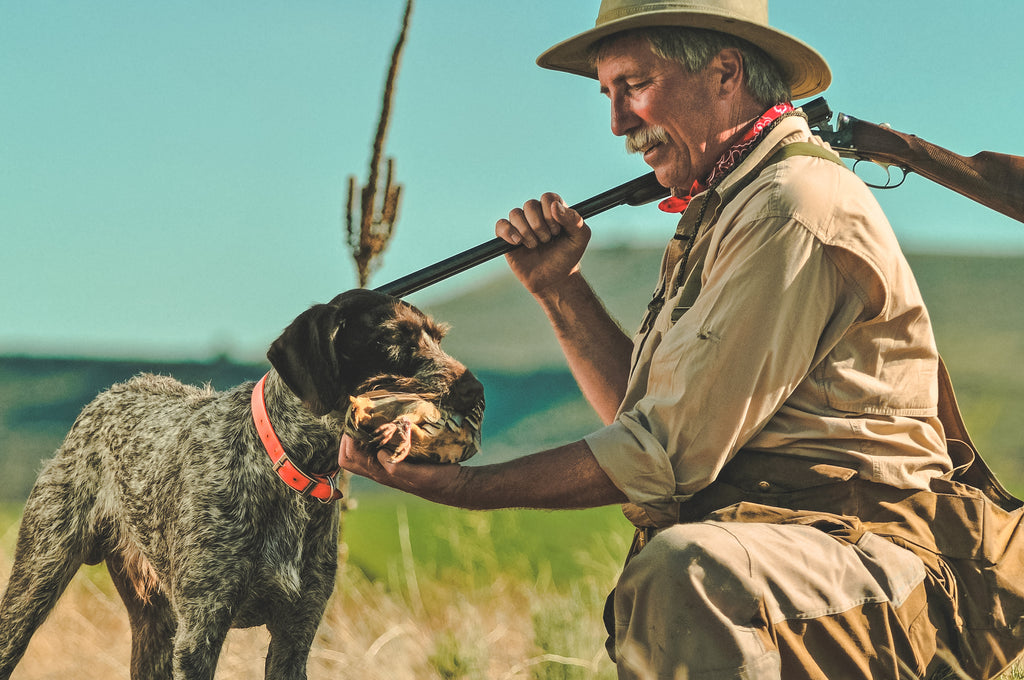Perfect Practice Makes Perfect

Confession: I am a conservatory-trained classical musician, tutored in the fine art of “perfect practice makes perfect.” Nothing less was acceptable to my professors, let alone picky audiences or symphony conductors hiring the best talent they could find.
Please don’t hold it against me; I’m searching for a twelve-step program but can’t find one – yet. Fortunately, I’ve left that business, but the obsession to do things right has now manifested itself in my shooting. Again.
If you watch my TV show, you know it hasn’t quite taken yet. My hunting forays are punctuated by bleeped-out curses and unscathed birds. Guides’ dogs look askance at me when their stellar performance is unrewarded. At night, lodge kennels buzz with critiques muttered under their breath in a language I’ll never understand. I know what they’re saying, by their tone of bark. If only I could argue back – I mean bark.

Now I’m applying my long-neglected music practice techniques in hopes the skills I mastered as a performer might help me as a shooter. It’s still a work in progress.
And don’t think because you’re a pretty good shooter, you can’t get better. Taking a lesson from a Spanish cellist, a classical music legend, I said something like “now that you teach …” He replied “I am always a student, sometimes a teacher.” So unless you’re better than Pablo Casals, you can probably pick up a tip or two.
So, the journey begins – again. Starting with lessons from those who shoot better than me (or you). But all great shooters aren’t great teachers, so it pays to be a bit selective. Seek out association-certified instructors, who understand bird hunting (if that’s your passion) or your favored clays game. It’s money well spent, if only to minimize the whispered insults of your squad mates on the skeet field. The dogs, though, are never satisfied – they want two birds to drop on every successful shot.

A symphony player I studied with once reprimanded me for showing off – I was a pretty good “sight reader,” able to play a lot of music at first look. Sure, there were glitches and bloopers, but I got to the end and considered it a pretty good parlor trick. He was unimpressed, and made it abundantly clear. It took iconic dog trainer Delmar Smith’s famous quote “Never give a dog a chance to fail” to remind me of that long-ago music lesson. On the clays course, I often pass on the springing teal and bouncing rabbit presentations. I’ll never hunt either species, let alone their faux clay versions. And the skills to hit those suckers aren’t the same as those for a flushing grouse or covey of quail, except in the abstract.
So instead I practice what I’ll do, hone those kinesthetics, and bask in the glory of more broken targets and shot birds. I learned another valuable lesson from that musician: don’t ever go to Trader Vic’s with the low-brass section of the San Francisco Symphony after a gig unless you are ready for the mother of all hangovers.
If you ever had to play a borrowed instrument, you know what I mean here. Practice with your hunting gun as the season approaches. It may not be an Italian work of art or sport a hefty price tag. But dance with the girl you’re taking to the prom, not her sister. Learn it. Live it. Love it.
Start from a low-gun position on clay targets. If squadmates are amenable, take a couple steps into the shooting station while calling for the target. It may be abhorrent to hardcore target fanatics, but every bird hunter will see the logic. Before you head for the range, practice at home. Be slow and deliberate with your gun mount, master the basics of hand position, safety clicking off on the mount, cheek to stock, head down and gun swing … all in slow motion, with an unloaded gun. Nobody plays “Flight of the Bumblebee” at breakneck tempo on the first try, why should shooting be any different?

When I was coerced into learning piano (required at my conservatory, for everyone), I was taught to learn each hand’s part individually, then combine them – eventually. You likely have two barrels. Shoot one for a while, at single targets. Be satisfied. Nobody will gripe if you hit a bird every time you mount your shotgun. But they’ll never let you forget you missed with both barrels, and by the way, you’re buying the beer tonight. Shoot the first bird first. See it drop rag-dead. Then leisurely ponder whether there’s a follow-up should for the golden-ticket double.
For my first college dress rehearsal, I actually squeezed into my second-hand/starving-music-student tuxedo until my older, wiser section mate told me to go change. But for gunners, a full run-through is a worthwhile final exam. Shoot your hunting gun, wear your hunting vest, fill your pockets with hunting gear and water, don your hunting boots, gloves and lucky hat. Make sure your vest functions as advertised. Adjust shoulder straps and waist belt. Put your ammo where you’ll carry it on opening day.
At a bonafide dress rehearsal, there’s no audience, no applause, the house lights are on so the janitor can sweep between the empty seats. Your gunning version will be much the same, including the feeling of preparedness you’ll have for your own Opening Night … in the field.
See you at the range.
Written by Scott Linden
[Scott Linden is host-creator of the TV series Wingshooting USA, author, magazine writer and blogger. His new website is www.findbirdhuntingspots.com, his podcast is at www.uplandnation.com.]
